The people in Thach That district, 30km from Hanoi, not only use laterite as a building material but also make various products from the rough and lumpy material, earning a high income.
People who have visited Thach That district will never forget the images of houses, village gates, wells and walls built with laterite bricks which have a dark yellow colour. These bricks create a rustic beauty in the countryside scene.
Today when visiting Binh Yen commune, we saw many workshops which have engaged in making diverse products like animals and decorative items from laterite.
Talking about the craft in the commune, Tang Huu Dung, owner of Dung Da workshop, said that in the past the locals only used the laterite as construction material. Over time, they discovered that the laterite is not only a cheap, durable and beautiful construction material but can also be used in making animals, statues and decorative items in houses and buildings. Therefore the locals have shifted to making fine art items from laterite and have established many workshops.
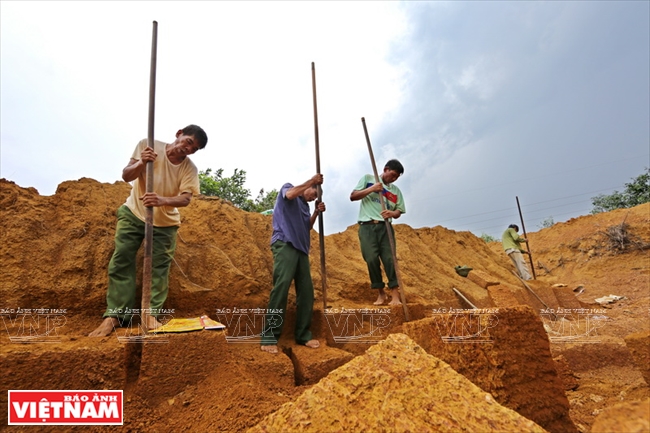
Laterite which is soft and looks like a beehive is a unique material for construction and making decorative items.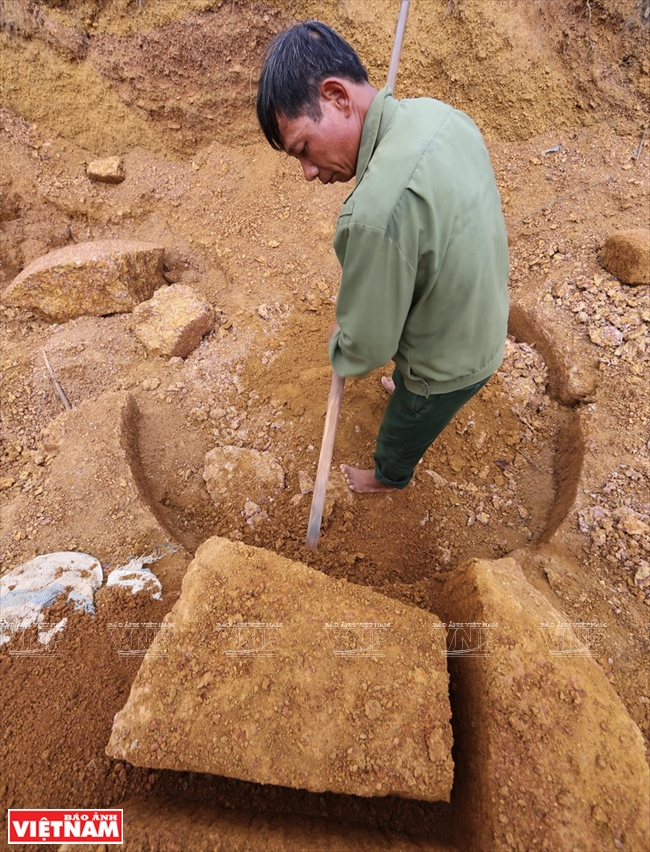
Using pieces of laterite to create different products.
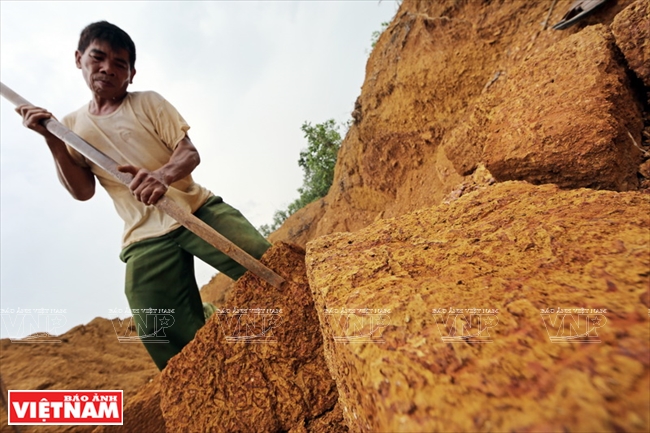
Workers dig laterite from deep underground.
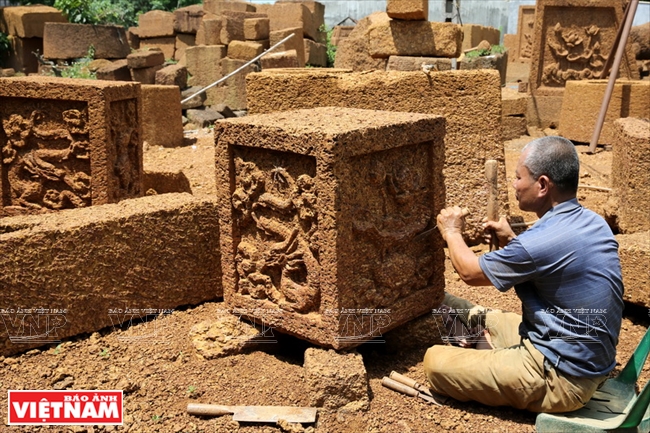
Processing laterite into material for building houses, sculpturing animals and pots.

A stage in processing laterite.
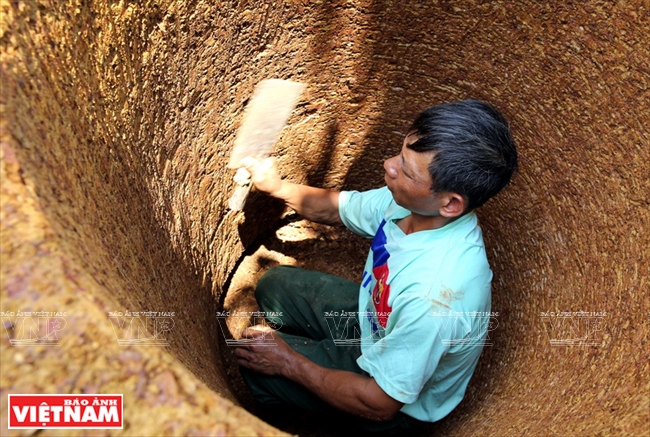
Making the walls of a well using laterite in Dung Da workshop in Binh Yen.
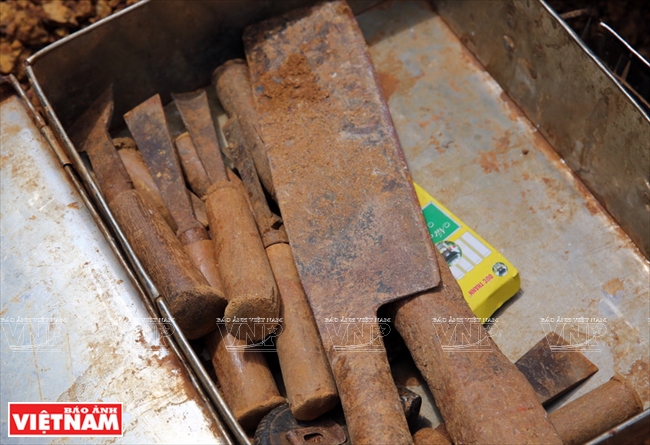
Tools used to turn laterite into products. |
Laterite is a soft and porous type of rock. Due to its main composition of iron oxide and aluminium, it is rather soft deep underground. However, when it is unearthed and exposed to the air, it gradually hardens so that it can be used to make building materials to replace bricks.
According to the commune’s statistics, there are about 20 households which are involved in mining and processing laterite. This work requires strong workers who are paid about 40,000 dong for digging each piece of laterite. Depending on the orders of the customers, they will make different decorative items.
|
According to the commune’s statistics, there are about 20 households which are involved in mining and processing laterite. This work requires strong workers who are paid about 40,000 dong for digging each piece of laterite. Depending on the orders of the customers, they will make different decorative items. |
Tran Van Nghiem, an artisan in the commune, said that making animals from laterite is the most difficult because it requires diligence and the skilful hands of the workers. The animals are sold for different prices based on the size, shape and time to finish. A pair of small laterite animals, worth 5 million dong, will take the artisan about 2-3 days to complete while a pair of large animals, worth 40 million dong, needs about two weeks.
At present, besides making animals for decoration in pagodas, temples and communal houses, the locals in Thach That are still providing laterite as construction material. Truong Ho Nong, an experienced worker, said that construction requires workers’ careful calculation with a detailed design. House walls built with laterite give a warm feeling and are good for soundproofing and cheaper than bricks.
Processing laterite has contributed to the district’s economic development and helped improve the living standards of the locals.
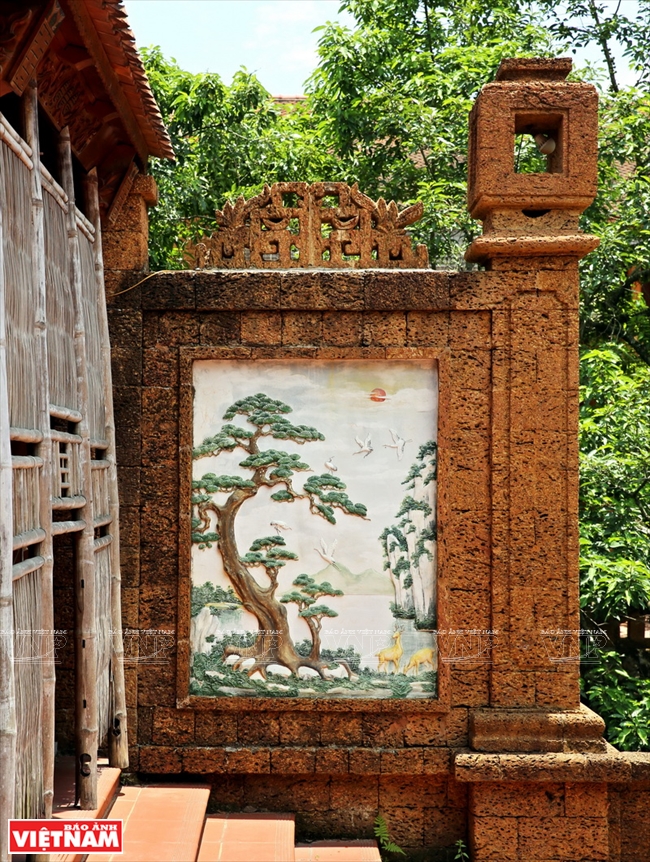
Laterite is used for decorating walls.
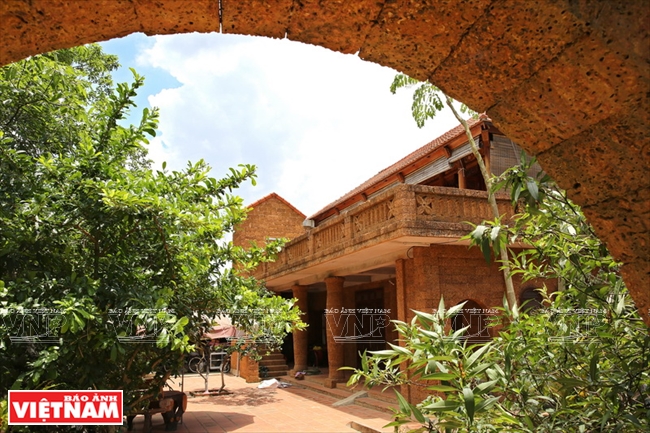
A house in Binh Yen commune was built with laterite.
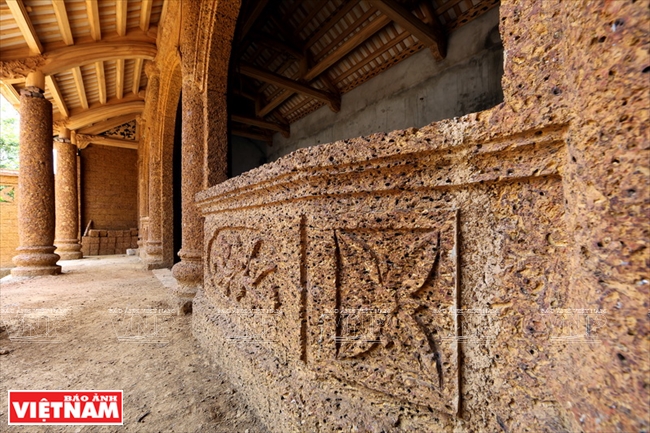
Laterite is a durable material, suitable for housing construction.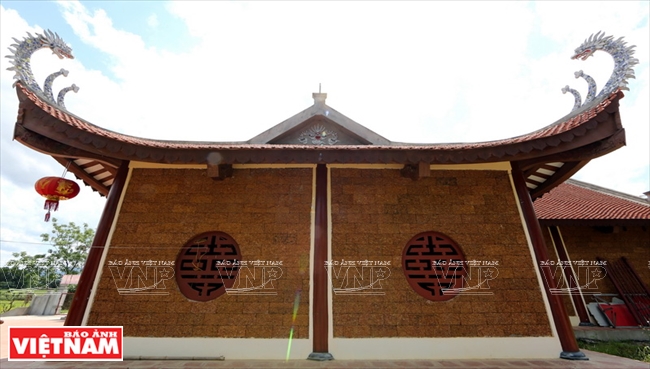
Thai Binh Communal House built with laterite.
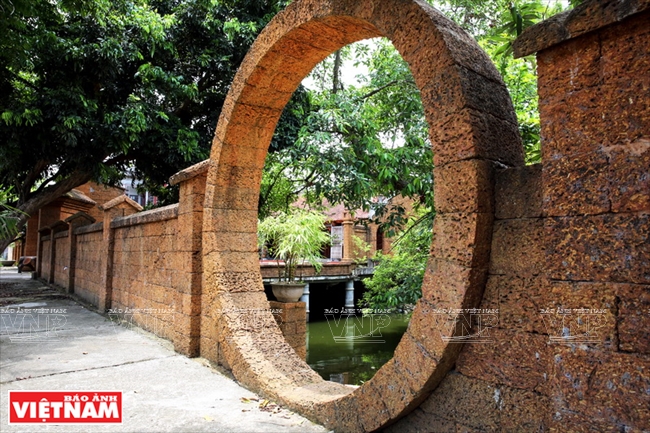
Fences are built with laterite in Binh Yen commune.
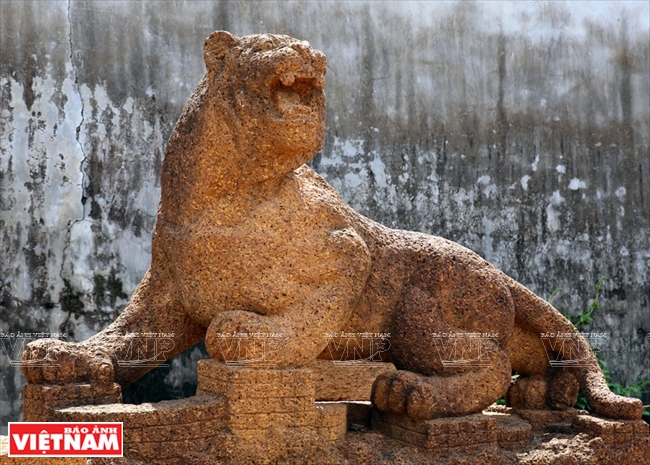
In recent years, locals in Binh Yen commune have also made animals of different sizes using laterite..
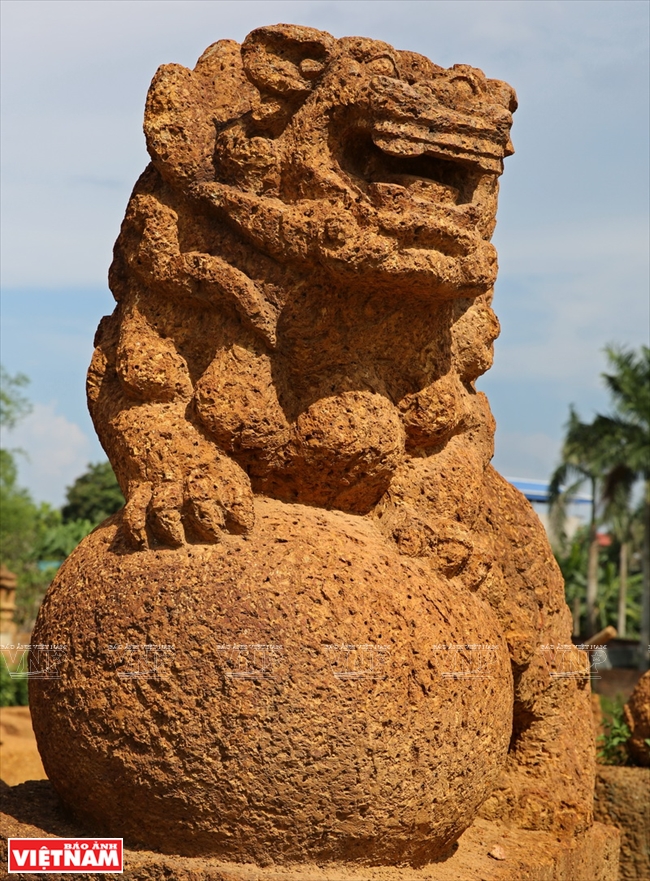
A laterite unicorn made by locals in Binh Yen commune.
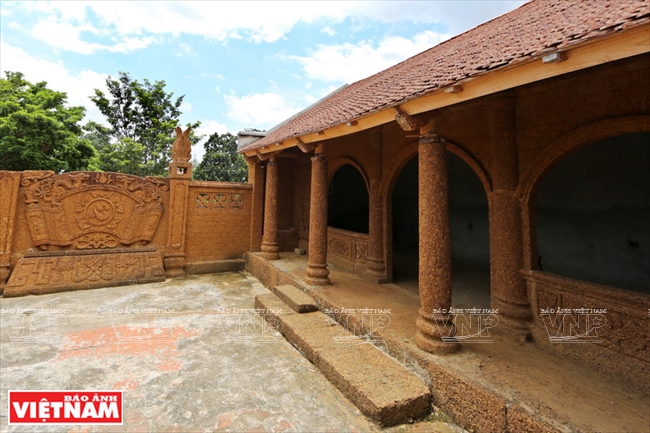
The house of Tang Huu Dung in Binh Yen commune was built with laterite.
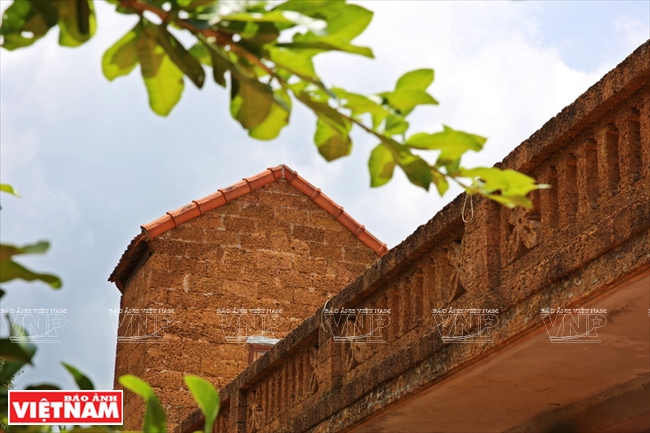
Laterite is suitable for building houses.
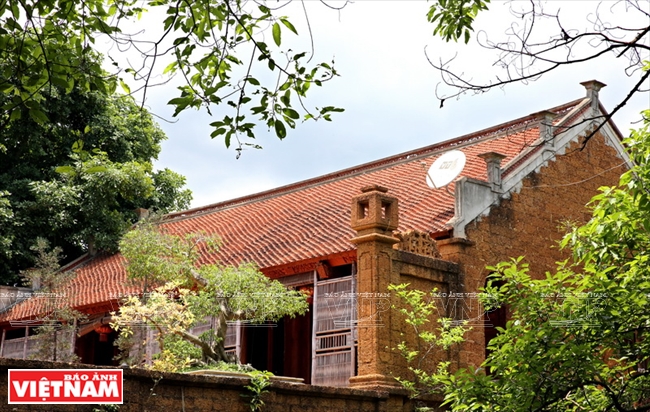
Laterite is combined with other materials to build houses.
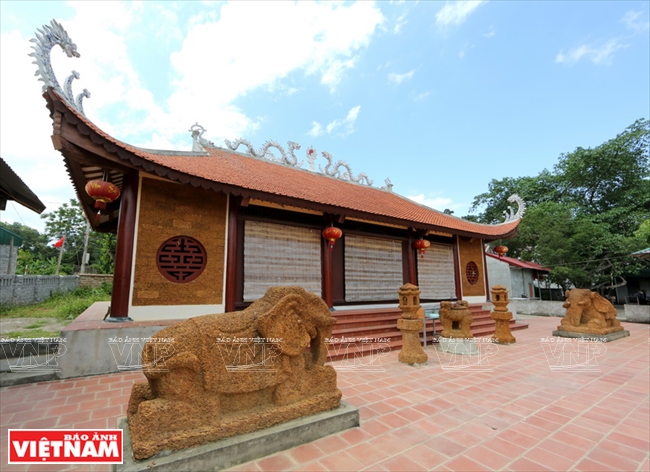
A pair of elephants made by laterite in Thai Binh Communal House. |
Story: Ngan Ha - Photos: Tat Son